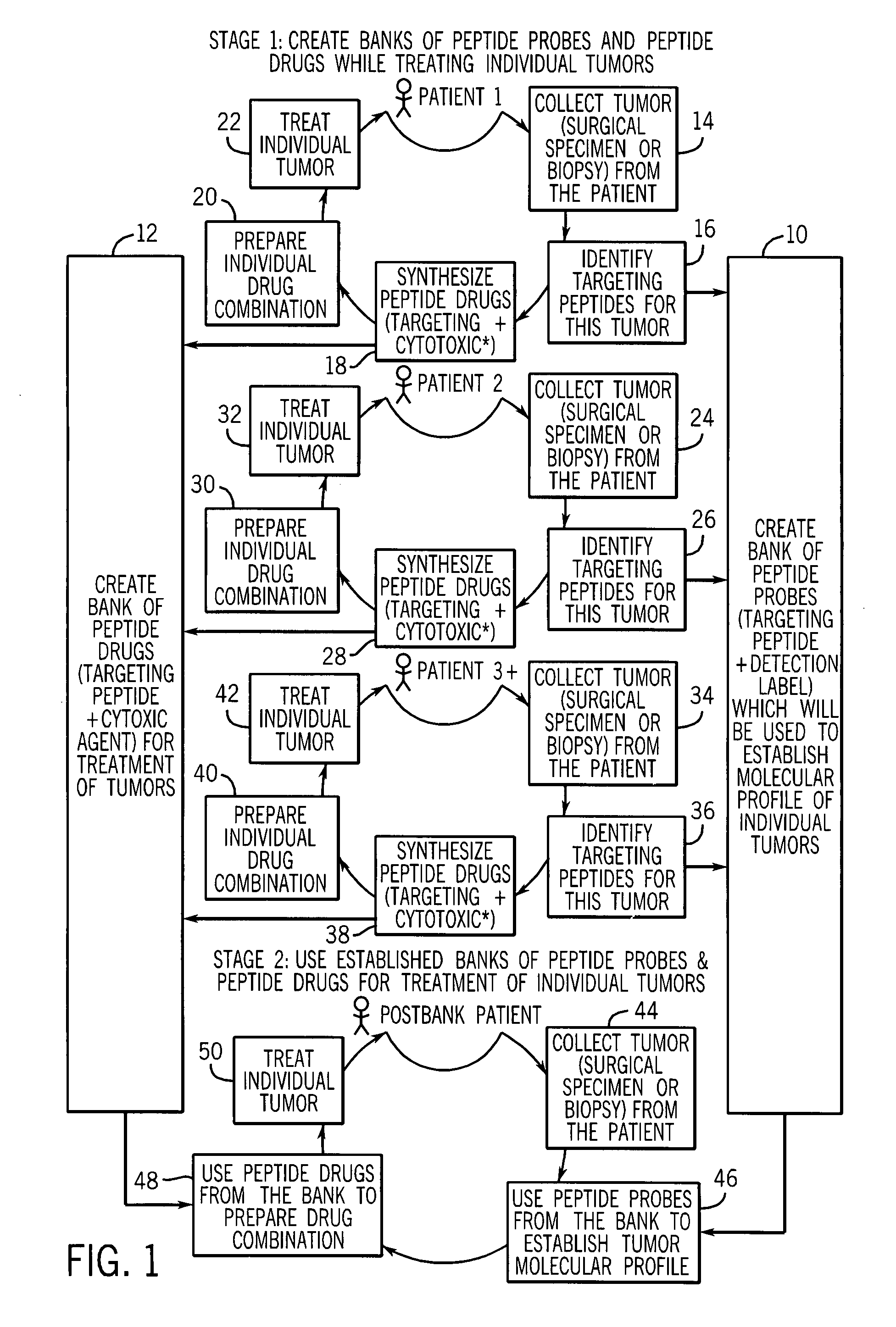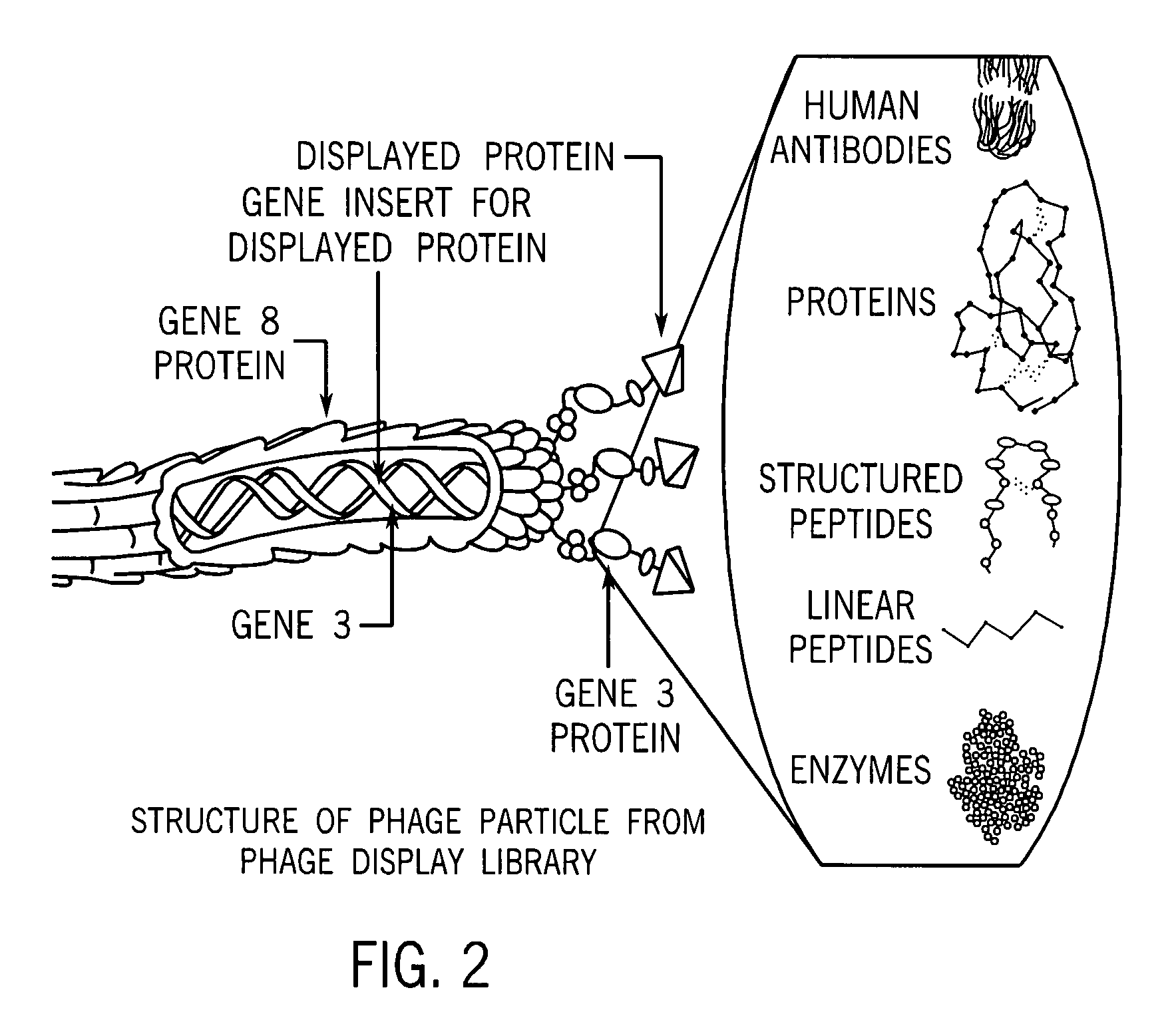Methods for targeting and killing glioma cells
a glioma cell and glioma cell technology, applied in the field of anticancer pharmaceutical drugs, can solve the problems of limited application of oboc libraries, limited oboc diversity, and inability to routinely use analyses in clinical settings, so as to improve the effect of treatment effectiveness, reduce toxicities, and be well standardized and inexpensive
- Summary
- Abstract
- Description
- Claims
- Application Information
AI Technical Summary
Benefits of technology
Problems solved by technology
Method used
Image
Examples
examples
[0053]FIG. 4(a) shows three peptide families selected for rat brain tumor cells (glioma) (published in Samoylova et al, “Phage Probes for Malignant Glial Cells,” Molecular Cancer Therapeutics, pages 1129-1137 (2003)). The first family of peptides appeared to target a marker that is common for glioma cells, normal brain cells, and cells of non-brain origin. The second group or family of peptides contains peptides with pronounced glioma-selective properties (see FIG. 4(b)). Binding of phage expressing peptide with this consensus sequence to two gliomas was several magnitudes higher than binding to normal cells (see paper mentioned above). Because this peptide sequence was very selective for cancer cells, this peptide was used as the peptide later on as a targeting moiety to create an anti-cancer cytotoxic agent (see FIGS. 5(a) and (b)). The third family demonstrated 63-fold glioma selectivity when compared to normal brain cells, astrocytes.
[0054]Using glioma-selective sequences from t...
PUM
| Property | Measurement | Unit |
|---|---|---|
| concentration | aaaaa | aaaaa |
| morphology | aaaaa | aaaaa |
| size | aaaaa | aaaaa |
Abstract
Description
Claims
Application Information
 Login to View More
Login to View More - R&D
- Intellectual Property
- Life Sciences
- Materials
- Tech Scout
- Unparalleled Data Quality
- Higher Quality Content
- 60% Fewer Hallucinations
Browse by: Latest US Patents, China's latest patents, Technical Efficacy Thesaurus, Application Domain, Technology Topic, Popular Technical Reports.
© 2025 PatSnap. All rights reserved.Legal|Privacy policy|Modern Slavery Act Transparency Statement|Sitemap|About US| Contact US: help@patsnap.com



